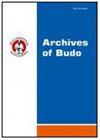Causes of injuries in young female judokas
IF 1.5
3区 医学
Q3 SPORT SCIENCES
引用次数: 14
Abstract
Background The health aspect of physical activity is not often referred to “effort safety” and “motor safety” of those engaged in this type of activity. The benefits of systematic training to humans are stressed instead. Yet even people for whom sport is a leisure activity often put in extreme physical effort. The aim of the paper is to expand the knowledge of the causes and locations of injuries in young female judokas. Material/Methods: We studied 30 females (14 juniors and 16 seniors) who were leading Polish judokas of various weight categories with medals from Polish Judo Championships and were aged 17–26 (average age was 20.9 years). On average, they had been training for 11 years. The study was based on our own questionnaire with 60 semi-open and closed questions. The questions concerned the personal characteristics of each athlete, including age, gender, weight, training experience, sports class as well as detailed information concerning factors that were the causes of each injury, according to the respondents. Detailed questions also dealt with the type and location of injuries as well as various aspects of judo training. In our statistical analysis we used a proportional ratio (in %), while the calculation of some empirical data (considered as variables and hypothetically interacting with each other) were based on the c2 test. Results: Most injuries in young female judokas occur during periods of the most intense training activity. These are usually heavy injuries that exclude the injured person from training for more than 4 weeks. Light injuries in judo occur less often than moderate injuries. Injuries in judo are caused by aggressive fighting which, however, does not determine their seriousness. Aggressive behaviour was observed in all groups of judokas with light, moderate and heavy injuries. Conclusions: An injury during a judo fight is a complex, multi-factor phenomenon. Coaches should carefully analyse training and competition fights of all judokas in order to individually influence the events that may lead to even light injuries.年轻女性柔道运动员受伤的原因
体力活动的健康方面通常不涉及从事这类活动的人的“努力安全”和“运动安全”。反而强调了系统训练对人类的好处。然而,即使是把运动当作休闲活动的人,也常常要付出极大的体力。本文的目的是扩大对年轻女性柔道运动员受伤的原因和位置的了解。材料/方法:研究了30名获得波兰柔道锦标赛奖牌的各重量级波兰柔道运动员,年龄17-26岁,平均年龄20.9岁,其中青少年14名,老年人16名。他们平均训练了11年。这项研究是基于我们自己的问卷,有60个半开放和封闭的问题。根据受访者的说法,这些问题涉及每个运动员的个人特征,包括年龄、性别、体重、训练经历、运动课程,以及导致每次受伤的因素的详细信息。详细的问题还涉及到伤病的类型和位置以及柔道训练的各个方面。在我们的统计分析中,我们使用比例比率(以%为单位),而一些经验数据(被视为变量并假设相互作用)的计算基于c2检验。结果:年轻女子柔道运动员的损伤多发生在高强度训练期间。这些通常是严重的伤害,使受伤的人不能参加超过4周的训练。柔道中轻伤的发生要比中伤少。柔道中的伤害是由激烈的战斗造成的,但这并不能决定其严重性。在轻、中、重度损伤的各组柔道运动员中均观察到攻击行为。结论:柔道比赛中的损伤是一个复杂的、多因素的现象。教练应该仔细分析所有柔道运动员的训练和比赛,以便个别影响可能导致轻微伤害的事件。
本文章由计算机程序翻译,如有差异,请以英文原文为准。
求助全文
约1分钟内获得全文
求助全文
来源期刊

Archives of Budo
SPORT SCIENCES-
CiteScore
2.80
自引率
47.60%
发文量
0
审稿时长
>12 weeks
期刊介绍:
Archives of Budo is an international peer reviewed journal publishing articles on various aspects of the sports sciences covering education and research in martial arts and combat sports, and related areas like biomechanics, kinesiology, medicine, psychology, sociology, technologies of sports equipment, research in training, selection, performance, survival, and other interdisciplinary perspectives.
Archives of Budo editors endorse the principles embodied in the Helsinki Declaration and expect that all research involving humans has been performed in accordance with these principles. All human studies must have been approved by the investigator''s Institutional Review Board. A copy of the relevant documentation should be included with the manuscript. Furthermore Archives of Budo follows the ICMJE''s Recommendations for the Conduct, Reporting, Editing and Publication of Scholarly Work in Medical Journals.
Archives of Budo provides free, immediate and permanent online access to the full text of all articles distributed under the terms of the Creative Commons Attribution Non-commercial License http://creativecommons.org/licenses/by-nc/4.0), which permits use, distribution, and reproduction in any medium, provided the original work is properly cited, the use is non-commercial and is otherwise in compliance with the license.
 求助内容:
求助内容: 应助结果提醒方式:
应助结果提醒方式:


